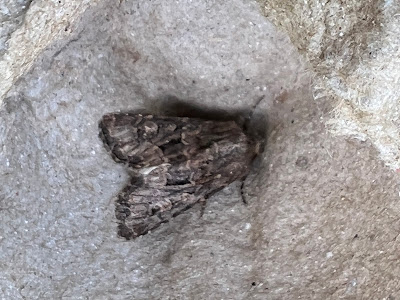I was reading up today about some of the rare close relatives of the Red Underwing which I featured yesterday and a detail about one in particular caught my eye. There has only ever been one Minsmere Crimson Underwing found in the UK, resting on the outside of a light trap in the Minsmere bird reserve in Suffolk in September 20 years ago. Much of the catch inside the trap, says the Moth Bible, 'had been destroyed by hornets.'
Cue my visit to my own trap this morning after a chilly night for the time of the year when I was not expecting rich pickings. Bold as brass on the eggbox nearest the lampholder was the very fine hornet above. Luckily, it did not seem to have destroyed anything.
I have read that hornets are very unaggressive even though they pack a nasty punch in their stings. That has certainly always been my experience. When I find one like this, I always take out its chosen eggbox carefully and chuck it into a bush. Each time serves to remind me to be careful when turning over eggboxes in the Summer. Even the most docile hornet would object to having one of my pudgy fingers squashing it.









No comments:
Post a Comment